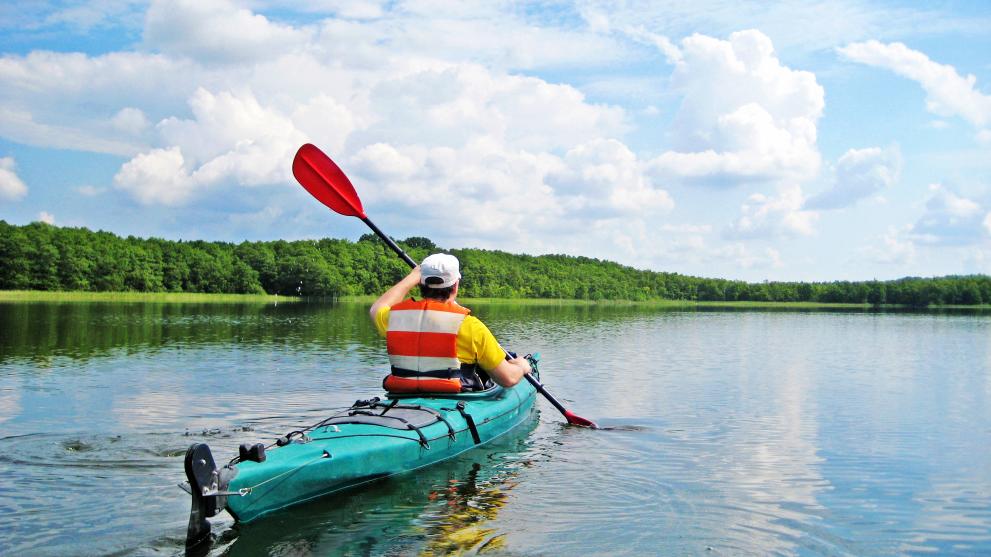
Viruses that cause stomach bugs can be present in lakes, including those used for recreation. However, viral contamination of recreational waters is rarely directly monitored and how viruses behave in lake water is poorly understood. Researchers therefore looked to assess the risk from four common waterborne viruses in Lake Geneva: adenovirus, enterovirus, norovirus and rotavirus.
Virus risk in recreational waters is usually assessed by detection of faecal indicator bacteria such as E. coli, as these are easier to measure than viruses – but their occurrence does not necessarily indicate viral pollution. Progress has been made in detecting enteric viruses in water samples using PCR-based (polymerase chain reaction) methods, but their use in monitoring is limited by cost and complexity. In addition, viruses are subject to degradation in the environment. This may limit the risk to health of contaminated water, and the concentration of infectious microbes may be overestimated in sites far from the source of pollution if all relevant factors are not considered.
The researchers note that water-quality models have been applied to non-viral pathogens in lakes, and this type of approach may offer insights into levels of active viruses likely to be found in water bodies. They therefore carried out simulations using hypothetical scenarios with raw sewage carrying different loads of viruses discharged into Lake Geneva, modelling impacts on human health via drinking water and recreational activities.
The lake currently receives discharge from several waste-water treatment plants (WWTPs). The researchers took monthly samples of raw sewage from the Vidy WWTP near Lausanne, from late 2018 to late 2019, to determine realistic virus concentrations in any discharged water (through PCR testing). Untreated contaminated water might be discharged in events such as heavy rainfall or technical failures, so weather data was used, for instance, to calculate the probability of this hazard occurring.
A hydrodynamic model was then applied to investigate how sewage water and viruses would be transported in the lake’s shore regions, accounting for wind direction, solar radiation, humidity and temperature. The researchers also modelled virus inactivation based on water temperature and levels of sunlight, which vary throughout the lake.
Lastly, they estimated the probability of infection while swimming at one of the Lake’s popular beaches. They assumed that 16–100 ml of virus-contaminated water is swallowed by one person during each recreational activity, and the risk of infection from exposure was based on dose-response functions. Using modelling, they then looked to assess the risk to swimmers at the beach of Morges, a popular swimming spot which could be contaminated by discharge from two separate storm-water outlets – Vidy (8 km to the east) and Morges (1.5 km east). Simulations of this discharge were performed in the context of observed weather conditions, twice a month, in 2019.
Rotavirus reached the highest concentrations in sewage, peaking in winter. However, simulations showed that it was norovirus that posed the greatest average risk of the four viruses, being 10 times more likely to infect swimmers than the others. This is in part because enterovirus and rotavirus become inactive in the environment more quickly than norovirus, but also due to norovirus being highly infectious even at low concentrations. This finding was in line with those from previous studies indicating norovirus poses a higher risk than many other common enteric viruses in the environment.
Environmental inactivation was an essential determinant of infection risk. When environmental stressors such as sunlight were accounted for, the risks posed by enterovirus and rotavirus were respectively 1 000 times and 50 times lower than in scenarios that only considered how they were transported and dispersed in the water. Environmental inactivation was also shown to lower active norovirus concentrations at Morges beach by up to 60%, though the effect was much reduced in winter due to shorter duration of daylight.
Accounting for environmental inactivation could, therefore, lead to substantially lower risk assessments compared to considering transport processes alone, say the researchers. They note that other factors, not accounted for in this study, could also reduce virus levels in lake water, such as attachment to particles that sink and settle.
Importantly, the research also found that wind played a crucial role in conveying contaminated water. For example, at beaches located west of the sewage discharge, swimmers were 43% less at risk of infection when the wind was blowing eastwards and away from the beach, than if it was blowing westwards towards the beach.
The study also indicated how risk decreased over time following sewage release, suggesting that just three days after discharge, risk of infection from bathing at Morges could drop to almost zero. The researchers say that if individuals were informed of virus-releasing events, they could choose to delay recreational activities.
The study highlights the potential for combining water-quality simulation and virus risk assessment to inform water resources management, and serves as one of the first attempts to integrate virus concentration measurement, virus transport and inactivation simulation with risk assessment of waterborne viruses at recreational sites.
Source:
Li, C., Sylvestre, É., Fernandez-Cassi, X., Julian, T.R. and Kohn, T. (2023) Waterborne virus transport and the associated risks in a large lake. Water research, 229: 119437. Available from: https://www.sciencedirect.com/science/article/pii/S0043135422013823
To cite this article/service:
“Science for Environment Policy”: European Commission DG Environment News Alert Service, edited by the Science Communication Unit, The University of the West of England, Bristol.
Notes on content:
The contents and views included in Science for Environment Policy are based on independent, peer reviewed research and do not necessarily reflect the position of the European Commission. Please note that this article is a summary of only one study. Other studies may come to other conclusions.
Details
- Publication date
- 8 June 2023
- Author
- Directorate-General for Environment

